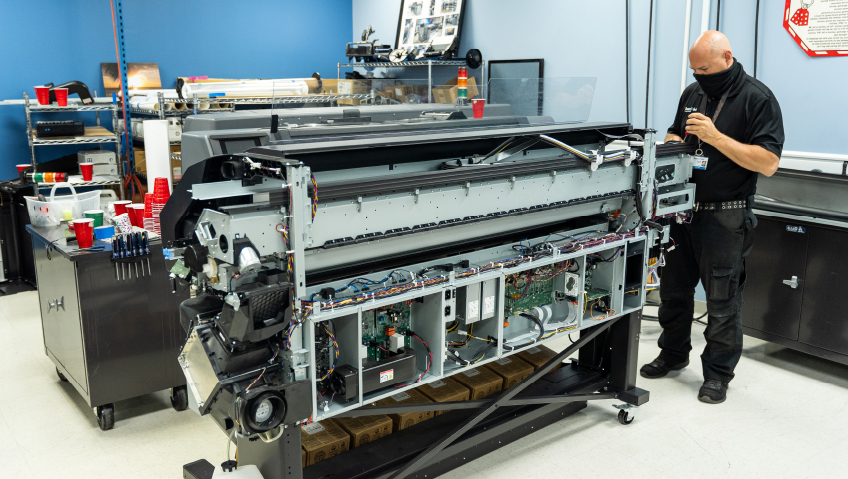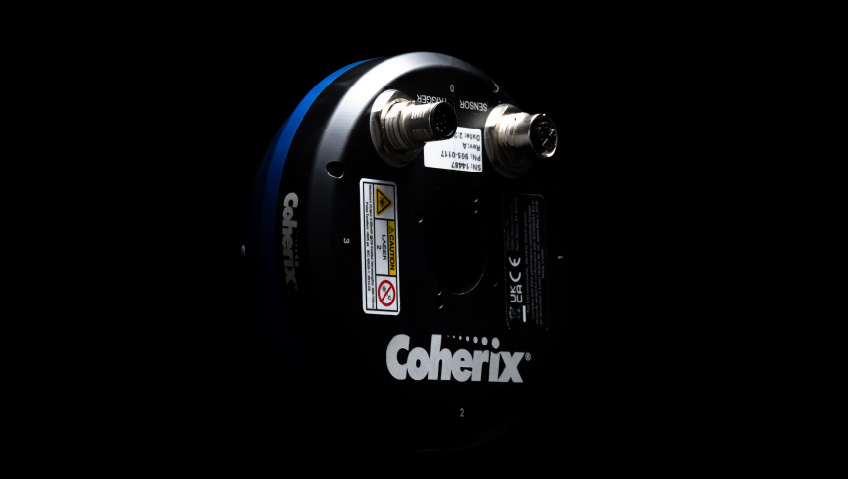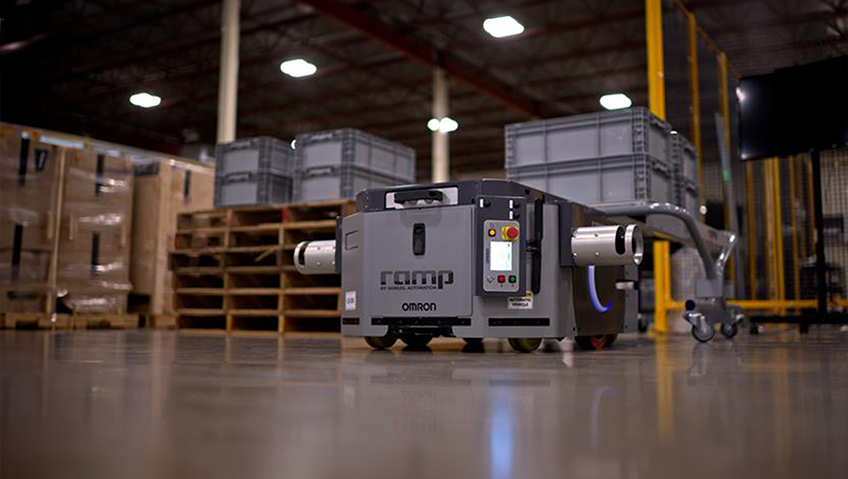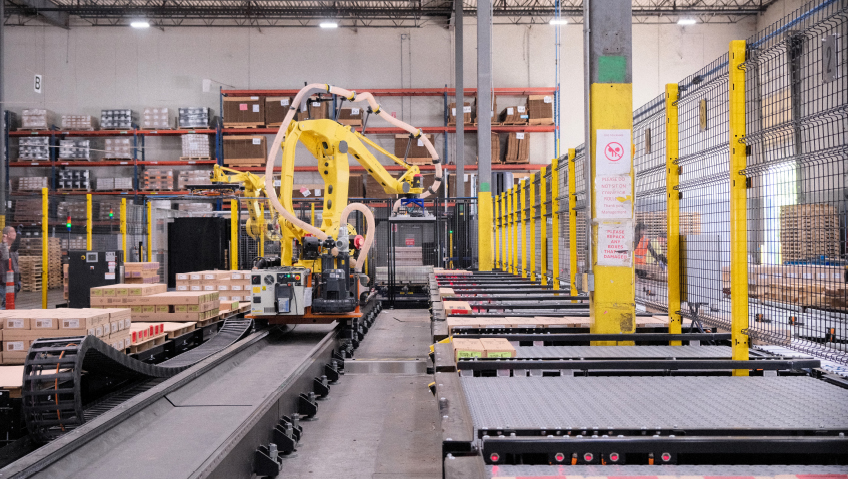As a next-generation service organization, Bell and Howell has been investing in the tools, technology, and training needed to help customers increase efficiency and reduce operational costs.
The Durham, North Carolina-based company is a technology enabled field services company that services automation equipment from mail to robotics with a large install base in north America spanning multiple OEMs and markets. The company also delivers comprehensive solutions in retail, grocery, and pharmacy click-and-collect, automation, and production mail.
“It’s our broad product lines that differentiate us,” says President and Chief Executive Officer Larry Blue. “Most companies in our market space have one solution. They try and shoehorn that product into every application that’s out there. We believe that, when it comes to retail and in the mail industry, one size definitely doesn’t fit all.”
Bell and Howell’s top-notch service is a key differentiator in all its businesses, and its geographic coverage gives it a clear advantage over the competition. “We are in all fifty states,” says Senior Vice President of Service Solutions Jim Feely. “The high quality service I provide someone in New Jersey is the same service they get in California and Texas. They don’t have to use multiple providers.”
The company’s North American footprint guarantees a quick response time, no matter where the client is located. “In service, the most important item for any customer is response time,” he points out. “It’s all about how quickly we can get there and fix the machine. If you have a contract with us, we can guarantee a four-hour response time, and in many cases, we’re averaging two hours to get there.”
One of the core strengths of Bell and Howell services is its remote monitoring capability. The company’s Remote360 platform, an IoT-enabled remote monitoring, diagnostic, and repair solution, monitors connected equipment 24/7, and automatically creates service calls based on algorithms. Automated escalations are built-in for “roll the truck” on-site repair when required. This Remote360 technology has helped tremendously in servicing Bell and Howell’s “essential business customers” especially in retail, grocery, and production mail industries during the pandemic.
“The goal is to capture potential problems before they go south and well before a tech needs to be dispatched,” Feely says. “We’re able to capture issues before it results in equipment downtime and in many cases, find and correct the matter before the customer knows there’s a problem,” he shares.
“We can now diagnose and repair 99 percent of service calls remotely on our grocery pickup systems,” he says. Across all of Bell and Howell’s remotely covered equipment, three out of every four service calls do not require the company to send a technician onsite and, even when one is required, remote technology ensures that they will be well-informed of the situation before they reach the site, thereby achieving a greater first-time fix rate.
When onsite, technicians can troubleshoot with help from headquarters via the same technology. “All technicians carry a handheld device that tracks their progress and allows audio-visual communication with our expert home office support staff. If a technician needs assistance, Technical Support can suggest what needs to be done in real time to simplify and speed the process. My specialists could be halfway across the country, [yet] literally on my tech’s shoulder assisting them, and seeing what they are seeing,” Feely says.
“A lot of companies say they’re a 7X24 operation, but a lot of those require prearrangements or standby,” he says. In contrast, Bell and Howell’s service is available around the clock. “You place a call here at 2:00 pm or 2:00 am, someone will answer, and you will get a service tech dispatched immediately, with no prearrangement required.” This gives customers peace of mind, especially those with machines used during non-traditional hours. “We can service it no matter what time they run, day or night.”
A sophisticated parts management system keeps the service team well prepared. The warehouse technology automatically restocks parts as they are used, so technicians never have to worry about placing orders or monitoring the stock. “Our inventory is so accurate, we have not had to complete a physical inventory in nine years,” Feely says.
Another advantage is that the company’s parts are stocked in locations throughout the United States and Canada, in proximity to customers no matter where they are. “So, someone in California does not necessarily have to wait for a part to come from Durham,” he says.
Bell and Howell, as part of its digital transformation, has invested heavily in technology, tools, and processes to improve its service execution. The new field service management software deployed this year has powered skill- and geo-location-based technician scheduling and dispatch among other things. Customers can create service calls, schedule appointments, track estimated technician arrival times, and see notes, parts used, and reports using a web-based customer portal in real time. Bell and Howell’s data analytics team continually refines the algorithms used for remote monitoring and predictive maintenance thereby increasing the service efficiencies both for customer and Bell and Howell.
Bell and Howell’s average technician tenure is fourteen years, making it a highly experienced service team. “We try to create a great environment for our associates to grow within the organization, myself included,” Feely says.
“I started literally at the very bottom while completing my degree in electronics from DeVry. Like many in Bell and Howell Service, I worked my way up through the ranks to now lead the entire Service organization. It is that kind of opportunity that keeps people here. Our employees know we work hard to promote from within, and that is what makes our team so strong. Keeping that tenure and that experience within our organization is absolutely huge and a tremendous value for our customers.”
Training is emphasized for both new recruits and the company’s most seasoned hands. “We’ve been ranked in the top one hundred training companies globally by Training Magazine eighteen years in a row,” Blue says. “So, we take it pretty seriously.” In addition to focusing on mechanics, electronics, and software, customer service interaction skills are a focal point of the company’s top-ranked training program. “We continuously train on how to provide the highest quality customer service and communication, because the one thing that we always find brings maximum value is not just our technical skill, but our ability to communicate and generate a trusting long-term relationship with our customers,” Feely says.
“We start every single class we have—every type of class no matter what it is—with one-hour customer interaction skills training,” Feely says. “We never want to lose focus on what matters most, and that is taking care of the customer.”
At the onset of the pandemic, Bell and Howell rapidly ramped up its remote learning capabilities, successfully migrating 95 percent of its in-person training to instructor-led virtual learning. “Utilizing this training methodology, we can train our technicians on new original equipment manufactured (OEM) products faster and more efficiently.” Bell and Howell is also experimenting with augmented and virtual reality training programs.
Bell and Howell is at the forefront of automated grocery locker technology. “Our solutions provide better access and an improved customer experience in getting groceries to consumers,” Blue says. This technology is particularly beneficial to food banks. “A lot of food banks are staffed by volunteers, so they may only be there two hours or four hours a week, and that’s your window to go pick up.”
Such restrictive hours can be a barrier for food bank clientele. But with Bell and Howell’s solution, food banks can load up a locker once a week and give clients quick and easy, round-the-clock access to fit their schedule.
“The added advantage is you don’t have the stigma of waiting in line at a food bank,” Blue says. The company’s commitment to fighting food insecurity extends beyond technology; the team also donates to local food banks. “We think this is a very important social issue for the country and for companies to address,” he adds.
The company’s automated grocery locker technology is also advantageous for the farm-to-table market. “For those farm-to-table companies who are trying to look at ways to get their goods to the end consumer without going through middlemen, this offers a direct-to-consumer way to provide those goods in both a convenient as well as high-quality way,” Blue says.
The next-generation service and technology that Bell and Howell provides are critical and increasingly in demand, particularly due to the global pandemic. “COVID had a big impact on that, accelerating the number of people who shop online and then go pick up in-store,” Blue says. “We’re going to see an expanded presence in automated pickup as consumers really demand that level of convenience from the stores they shop at.”
The number of consumers who shop for groceries online rose from less than five percent to around twenty percent during the pandemic. “That’s still only one in five consumers who are shopping online for groceries, so there is significant opportunity for added convenience and added sales around online grocery purchase and pickup,” Blue says.
The opportunity extends to pharmacies as well. “Prescription pickup itself is a relatively new market, but the data indicates there’s a lot of pent-up demand for after-hours and extended-hours pickup,” Blue says.
The team is eager to be at the forefront of these industry advancements and emerging opportunities. “Having a geographically distributed, highly-skilled mechatronics technical team that can get there in hours and keep that equipment running is the real advantage that we have,” Blue says. “And we think that that advantage is going to continue to drive our growth as more and more market segments automate.”






